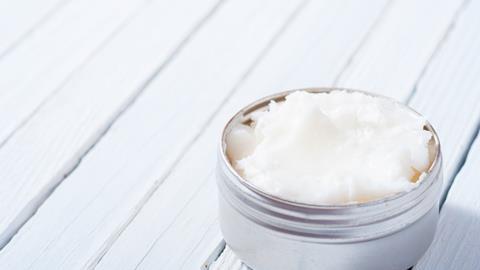Meera Senthilingam
This week, Brian Clegg brings you the science of hyaluronic acid.
Brian Clegg
If there’s one thing to make anyone with a scientific background cringe it’s when an advertiser starts pushing ‘the science stuff’. Probably the worst offenders are cosmetic manufacturers, and you don’t have to take in many of their adverts before getting the impression that hyaluronic acid is a wonder substance, a compound well worthy of study.

Hyaluronic acid, also known as hyaluronan, is one of a group of naturally occurring complex organic compounds called glycosaminoglycans, that form long polysaccharide chains with a repeating formula of C14H21NO11. It was first found in the vitreous humour – the clear gel that fills the eye – which is where its name, combining ‘hyalos’, the Greek for ‘vitreous’, with ‘uronic acid’, originates. But hyaluronic acid also occurs widely in connective tissues, forming a major component of the matrix that supports cells in an organism. Its properties were first investigated by the German biochemist Karl Meyer at the University of California, Berkeley in the 1930s.
The compound is also a significant component of skin, where it has a role in tissue repair, hence the enthusiasm of the cosmetic manufacturers. But the first use of the substance was at a deeper medical level. It has been employed since the 1970s after cataract operations to encourage tissue healing and has also been used as an injection to treat ankle, knee and shoulder osteoarthritis pain, though there is some debate about its actual benefits in this case. It is more widely used to treat joint disorders in horses. And it has also been employed to produce biological scaffolds to help with wound healing, particularly when diabetes hinders the healing of chronic wounds. The opportunities for using the compound in regenerative medicine are being widely studied, as it can help shape structures as well as encourage healing.
Hyaluronic acid also has a natural dark side. A number of compounds involved with hyaluronic acid, notably the hyaluranon synthases, enzymes that build the long chain of the compound, are major contributors to cancer metastasis, the process by which cancer spreads from one organ to another. The compound can also degrade under the action of ultraviolet light and can produce inflammation if it begins to break down after application to the skin.
It’s a compound you ought to know about – because you’re worth it
The first appearance of hyaluronic acid on the cosmetic front was in a rather more heavy duty form than is typically advertised, when from around 2003 it began to be used as a filler, injected under the skin to expand the soft tissues, smoothing out wrinkles in a process that can last up to around six months. A similar process is used in lip augmentation and in scar removal.

The more familiar topical use, where a treatment including hyaluronic acid is spread on the skin, relies primarily on its humectant properties, where its ability to trap water vapour from the air results in moisturisation that can be effective in countering the natural drying effects of cleansing products. This part of its role is well established, but suggestions that it will also stimulate collagen synthesis and hence help reduce ageing effects by making wrinkles less visible is not strongly supported by clinical data – though this doesn’t prevent common claims that the compound will remove fine lines and improve skin tone. It’s true that hyaluronic acid levels in the skin do reduce as we get older, but it’s not clear how much benefit can be gained by pasting it on.
However, it still provides the opportunity for the headline makers to go wild. As Marie Claire magazine put it ‘Ever wondered how the Hollywood elite make it through the maelstrom of glitzy parties looking immaculate? Well, they’re on acid… hyaluronic acid, that is.’ It is from the topical use of the compound in a plethora of beauty products that we see hyaluronic acid described as ‘nature’s extraordinary youth matrix’ a ‘brilliant plumper for parched, environmentally assaulted skin’ or ‘the body’s own hydrating molecule’.
On the assumption that a substance that has benefits when applied directly will also help as a skin treatment when swallowed, hyaluronic acid is also widely available as a food supplement. Although it appears to break down harmlessly when consumed, there is no reason to think that dietary supplements will enable the hyaluronic acid to somehow reach the skin and enhance it. Coupled with some concerns of possible adverse effects for those who are pregnant or breastfeeding, it isn’t clear why this substance is used as a dietary supplement.
It’s easy to dismiss anything promised by cosmetic advertising, with its tendency to pick up on scientific buzzwords like ‘DNA’ and use them randomly to give credibility to a product. But there is no doubt that hyaluronic acid is an important compound for living organisms and has medical benefits – even if the cosmetic results are rather less clear. It’s a compound you ought to know about – because you’re worth it.
Meera Senthilingam
Science writer Brian Clegg, with the not-so-cosmetic chemistry of hyaluronic acid. Next week, Helen Scales is making things glow…
Helen Scales
It’s well known that the pearls found inside mussels, oysters and other molluscs owe their gleaming iridescence to mother-of-pearl, known also as nacre.
Meera Senthilingam
Find out the chemistry behind this luminescence with Helen Scales in next week’s Chemistry in its Element. Until then, thank you for listening, I’m Meera Senthilingam.













No comments yet